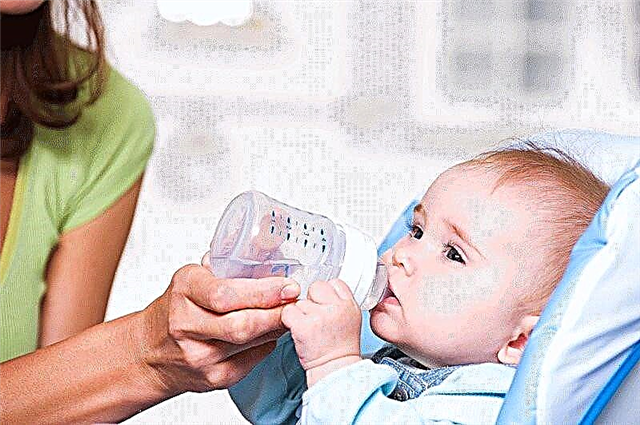
19th week of pregnancy is a calm and still easy "equator" for gestation. It is still a long time before childbirth, but the "interesting" situation has already become noticeable to others. The belly is rounded, and if the birth of twins is planned, then it is already impossible to hide it at all. It is this week that a woman can expect a second scheduled appointment with a baby for an ultrasound scan. What the expectant mother can see, we will tell in this article.

Objectives of the survey
The second planned ultrasound scan, which is carried out for pregnant women who are registered in the antenatal clinic, is usually appointed in the period from 18 to 21 weeks. 19 week obstetric calculus - this is about 17 weeks of the baby's embryonic life, that's how much time has passed since the moment of conception.
Screening ultrasound scanning at this stage allows you to find out how the baby is developing, to establish whether he has developmental defects, to evaluate specific markers of possible pathologies.

Ultrasound results at this time complement the diagnostic laboratory picture, because a little earlier the expectant mother donated blood from a vein for biochemical analysis. Both results are collectively considered by a special computer program that calculates the risks of congenital anomalies.
In addition, an ultrasound scan at week 19 is prescribed to make sure that the baby is well-being, if a woman has alarming symptoms - pulling pains, atypical discharge for mid-pregnancy. Besides, An ultrasound scan may be recommended if the doctor has doubts about the correctness of the assessment of the timing of gestation.

Method of conducting
Ultrasound this week is performed abdominal - the scanner sensor is located on the anterior abdominal wall. No diet and intake of funds that reduce gas formation in the intestine is no longer required at this time, because the uterus is already large enough, and the amount of amniotic fluid allows ultrasonic waves to penetrate and reflect without problems.
For the scan, the woman is placed on a couch in the supine position or on her side if she is carrying twins, and the pressure on the inferior genital vein while lying on her back is already noticeably pronounced.
Vaginal ultrasound examination can also be used, but only if the woman has suspicions of the threat of termination of pregnancy. Internal examination with an intravaginal probe allows you to accurately assess the state of the cervix and cervical canal.


It is worth taking a clean diaper with you for examination to cover the couch, as well as paper napkins to remove excess gel from the abdomen.
What does ultrasound show?
At the 19th week, a lot of interesting things await mom, because her baby has already grown noticeably. The size of the fruit at this time can be compared with a large potato. The baby's height is about 19-22 centimeters, and the weight is about 200 grams.
All organs and system of the baby are formed, now they are actively growing and improving. In the brain of the crumbs at week 19, special zones are activated, which are responsible for the five main senses - touch, smell, hearing, sight and taste.
The baby still looks thin, but from this week on, subcutaneous fat begins to form, which will warm him immediately after birth, until the thermoregulation processes are established. Thanks to him, the baby will delight loved ones with chubby cheeks, dimples.


At the 19th week, the neck muscles become stronger, and the baby gains the ability to twist his head, "look around" around. Small fingers on the arms and legs are bent at all joints.
Multiparous women already feel fetal movements, many women who first decided to become mothers are in a pleasant expectation of the first tangible movements.
On the ultrasound monitor this week, the mother and the diagnostician will be able to see the baby who is actively moving, he still has enough space even to make head-overs and somersaults.

On the ultrasound, you can listen and see how hard and rhythmically the crumbs are beating. At this time, it is already possible to determine the sex of the baby with great accuracy.
An erroneous diagnosis of gender during this period is unlikely, since the genitals are formed and clearly visible, and the baby, who is not yet cramped, does not hide them, as it happens in the later stages of the third trimester.
In addition to the size of the fetus, the doctor will take an interest in the state of the placenta, which is already fully formed and performs the entire range of functions for feeding and protecting the baby. Its thickness will be measured using ultrasonic waves, and its location will be assessed.

Decoding and norm
First of all, the diagnostician will tell you how many babies are growing under a woman's heart - one, two or three, and will also assess the viability of each of them. Vitality is determined by the presence of a heartbeat and physical activity.
Also, the doctor will tell you in what position the child is in relation to the exit from the uterus - in the head, pelvic or transverse position. It is not worth worrying about the "wrong" location of the baby. The child will change its position many times before the end of the gestation period.
The main dimensions that are calculated on an ultrasound scan are fetometric indicators... These include the dimensions of the head - transverse, which is also called biparietal, and longitudinal - fronto-sharpening. The doctor also measures the circumference of the head, tummy and the length of the paired bones.

All these indicators are considered important signs of the normal development of the baby, as well as compliance with its gestational age.
Fetometry table for weeks 18-19:
In the ultrasound protocol, the doctor also describes the anatomical features of the child. At this time, all internal organs, their presence and proportions are clearly visible.
The structures of the brain, baby's heart, stomach, kidneys, lungs, liver, gallbladder, and intestines are subject to careful study. The term already allows you to see developmental defects, if any. If there are no gross violations, the doctor writes that the internal organs are normal and there are no signs of developmental pathologies.
The thickness of the placenta this week is normally 20-21 mm. It should be of zero maturity with no signs of overgrowth or thickening. Threats of interruption may be indicated by an increased tone of the muscles of the uterine walls, as well as shortening of the cervix and looseness of the cervical canal.

Possible problems
The list of possible problems and questions that expectant mothers may have at week 19 is quite wide. We have tried to answer the most common ones.
Baby's parameters are lagging behind the norm
You should not worry and be nervous if the sizes according to fetometry deviate by no more than two weeks. The reason may lie in late ovulation. Usually, with this state of affairs, a slight lag from the average size was noticeable during the first ultrasound scan in the first trimester.
Sometimes, intrauterine growth retardation can be the cause of size deviations. The woman will definitely be shown to undergo additional diagnostics.

You should not consider each parameter separately, this is precisely the key mistake of all expectant mothers.
If an ultrasound scan shows that there are deviations in only one parameter, this still does not mean anything bad. It's just that children grow up unevenly, “in leaps”, and the insignificant difference may even out in a week or two.
Doctors look at fetometric parameters of the fetus differently - for diagnosis, proportions are more important than specific sizes.

Why after ultrasound gave a referral to genetics
Do not forget that the main purpose of this ultrasound is to screen for possible pathologies. If the diagnostician has some doubts about the outlines of the nasal bones, facial profile, pathologies of internal organs, he assumes that the child may have Down syndrome or there are signs of achondroplasia, then he will advise you to visit a geneticist and do another ultrasound - expert class.
A geneticist can offer the expectant mother methods of invasive diagnostics - cordocentesis or amniocentesis in order to obtain results with an accuracy of 99%, which will make it possible to judge whether the baby has pathologies or not.

Pictures
Regular 2D ultrasound scans this week only give a general idea of what a baby looks like. You can examine the baby in more detail on a 3D ultrasound.
There is no doubt about the gender determined and shown to the expectant mother and father during the 3D scanning.


For information on how 3D and 4D ultrasound of the fetus goes at 19-20 weeks of gestation, see the next video.



